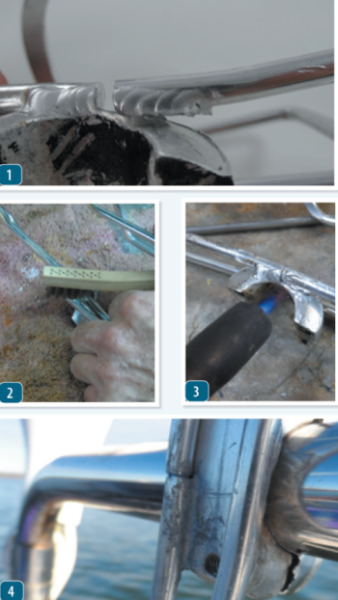The real challenge when brazing aluminum is that the aluminum pulls heat away from the work area like lightning, 3-4 times faster than steel. A propane flame is hot enough to melt a small bit of aluminum, if you get carried away, but not hot enough to transfer enough heat to something larger that is trying hard to cool down.

- This aluminum water bottle holder that we mounted on the stanchion of our test boat broke when a line wrapped around it.
- Because aluminum forms a thick, tough oxide coating that doesn’t break down under heat, cleaning is even more critical than either welding or soldering. Grind or file the surfaces clean and create a good fit without producing gaps
- Keep it hot, but not too hot. Particularly with thicker metal, it can help to continue heating for 30 seconds or so after applying the filler, to maintain temperature while the filler wicks in. On thinner materials you need to watch the heat; we melted through thinner materials a few times. Touch the rod to the work periodically; as soon as it flows easily, it is hot enough.
- Based on a few test pulls, we believe the finished product should stand up to several years. Although brazing does not penetrate or blend with the base metal like welding, in some cases it may create a better surface bond and provide more bond area than a surface weld.































